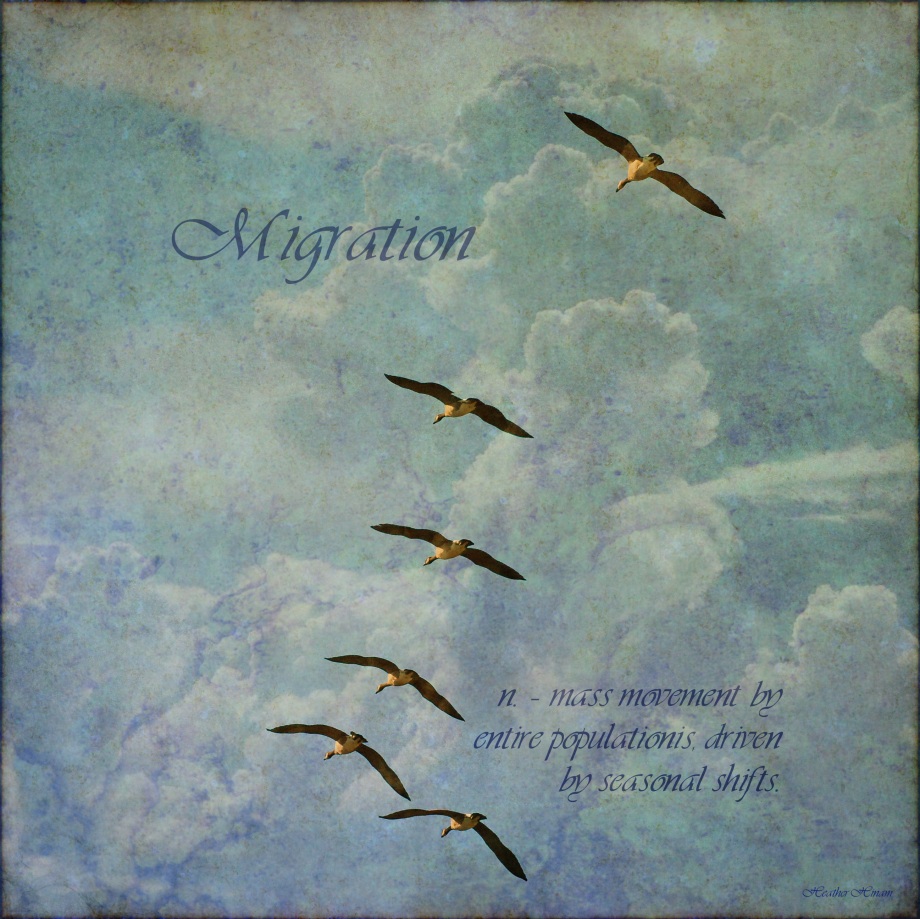 For weeks now, the air has been full of motion, full of flapping wings and rhythmic calls. Fall has been rolling over us like an endless wave, washing down from the north along ancient streams with millions of birds at its crest.
For weeks now, the air has been full of motion, full of flapping wings and rhythmic calls. Fall has been rolling over us like an endless wave, washing down from the north along ancient streams with millions of birds at its crest.
We’re deep into migration season here in the north woods. Actually, I’m sad to say that we’re getting close to the end. When it starts in mid-August, it’s a subtle change, a gentle trickle, as species begin to disappear like lights blinking out on a Christmas tree. It begins with the little guys, warblers, shorebirds and hummingbirds that have to make the long trek to Central and South America. One of the first of the larger species to go are the Sandhill Cranes (Grus canadensis), their warbling calls ringing so high up in the sky that you often can’t see them against the clouds.
By mid-September, most of the songbirds are gone and we’re knee-deep in waterfowl, thousands of Canada Geese (Branta canadensis), Snow Geese (Chen caerulescens) and assorted ducks darken the skies and fill the farmers’ fields on their way to the southern United States. Now, in late October, the last of the waterfowl are heading off and Bald Eagles are following in their wake, on their way to places where the water bodies don’t free solid.
In Manitoba, about 85% of our birds migrate, but how do they know when it’s time to leave?
Just like the leaves on a tree and pretty much every other living organism on earth, birds are tuned into rhythms of time, the waxing and waning of day length. As the days get shorter, it triggers a response in their hypothalamus that cascades from the brain through the endocrine system, changing the cocktail of hormones coursing through their veins, resulting in an itch to move that just won’t go away. Biologists call that itch ‘migratory restlessness’ or zughenruhe.
During this period, birds get antsy, staying up well past their normal bedtimes and eating like it’s going out of style. There’s a point to this sudden change in behaviour. Most birds migrate at night and it’s important that they store as much energy as possible for their long flights. In fact, migrants will increase their fat loads to anywhere between 15 and 50% of their body weight, depending on the length of their trip.
Many have a very long way to go, some travelling thousands of kilometres to their wintering grounds. Getting there takes a good sense of direction and birds make use of a lot of different tools. Like the explorers of old, the sun and the stars play a big role in keeping birds on migratory routes that have been passed down for thousands of generation. Because many birds migrate at night, the setting sun offers a quick and easy compass to use for orienting their take-offs. Scientists have confirmed this by studying captive birds and using bring lights as a substitute celestial body. Whenever they moved the light, birds would change their take-off orientation accordingly, ensuring they were headed in the proper direction.
It’s not always possible to see the sun or the stars and once you’re in the air, they become less useful. In many cases, large landmarks, like rivers and mountain ranges serve as highways, guiding the flocks on their journey. However, when all visual cues fail, they still have one more fallback. Deposits of the mineral magnetite in their brains have been found to operate as a built-in compass, allowing individuals to pick up the earth’s magnetic field and orient themselves appropriately.
Studies are still trying to sort out how this all works from a biological level, but there’s no question of its usefulness. Work with homing pigeons have shown that messing up the electrical fields around the birds’ heads made it impossible for them to navigate accurately by scrambling their magnetic reception.
So as you watch a V of geese winging their way overhead, just take a moment to watch them. What you’re seeing is an amazing confluence of adaptations and millenia of evolution that have resulted in one of the most astonishing natural phenomena on earth that can be witnessed just about anywhere by anyone.
